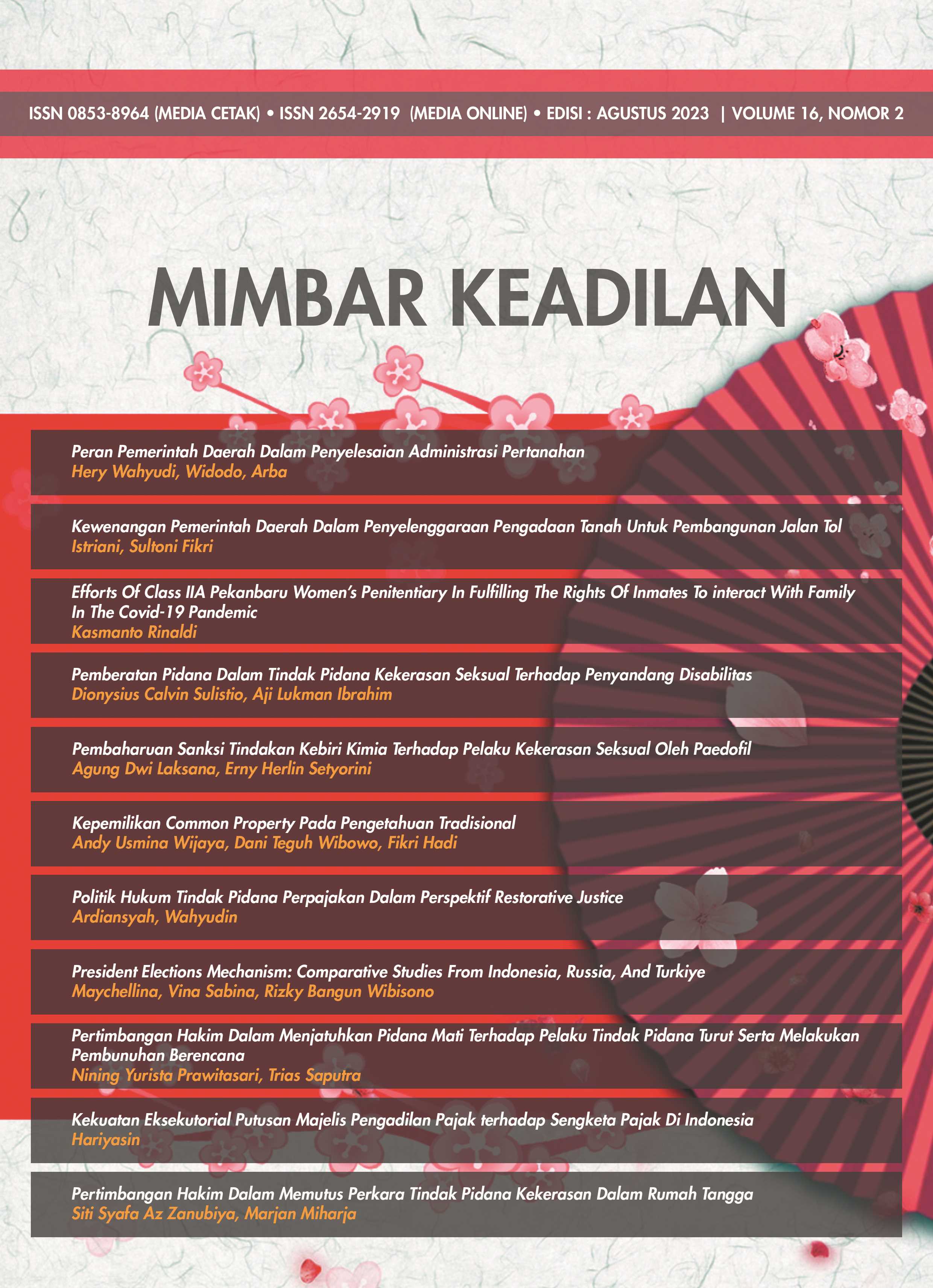Efforts of Class IIA Pekanbaru Women’s Penitentiary in Fulfilling the Rights of Inmates to Interact with Family in the Covid-19 Pandemic
DOI:
https://doi.org/10.30996/mk.v16i2.8476Keywords:
family, penitentiary, womenAbstract
Most of the female prisoners in Pekanbaru Class IIA Women’s Penitentiary have children and families, but while having their sentences, they can’t interact with their children or families as usual. Most of them are mothers. Mothers play an important role in children’s development. The method used in this research is a qualitative method to analyze about how is the efforts of Pekanbaru woman’s penitentiary in optimizing the provision of inmates’ rights by interacting with family during covid-19 pandemic. The results of this study are the efforts of Pekanbaru Class IIA Women’s Penitentiary on granting women’s right is not optimal, which is it is the same as in ordinary penitentiary. There is no special treatment for women in penitentiary even though the interaction with their families, especially their children is very important, considering the children will still need a mother figure. The conclusion of this research is women in penitentiary have a minimum interaction with their families, especially children, and it has the potential to cause children to commit deviate behavior. Based on social bond theory, there are four elements that influence children’s behavior, if any of these elements are not fulfilled then the children will deviate. The children will tend to have no attachment to their parents, especially mothers while the mother is in a penitentiary or prison, and it will cause children to commit delinquency
Downloads
Downloads
Published
Issue
Section
License
Authors who publish with Mimbar Keadilan agree to the following terms:
- Authors transfer the copyright and grant the journal right of first publication with the work simultaneously licensed under a Creative Commons Attribution-ShareAlike 4.0 International License.. that allows others to share the work with an acknowledgement of the work's authorship and initial publication in this journal.
- Authors are able to enter into separate, additional contractual arrangements for the non-exclusive distribution of the journal's published version of the work (e.g., post it to an institutional repository or publish it in a book), with an acknowledgement of its initial publication in this journal.
- Authors are permitted and encouraged to post their work online (e.g., in institutional repositories or on their website) prior to and during the submission process, as it can lead to productive exchanges, as well as earlier and greater citation of published work (See The Effect of Open Access)














